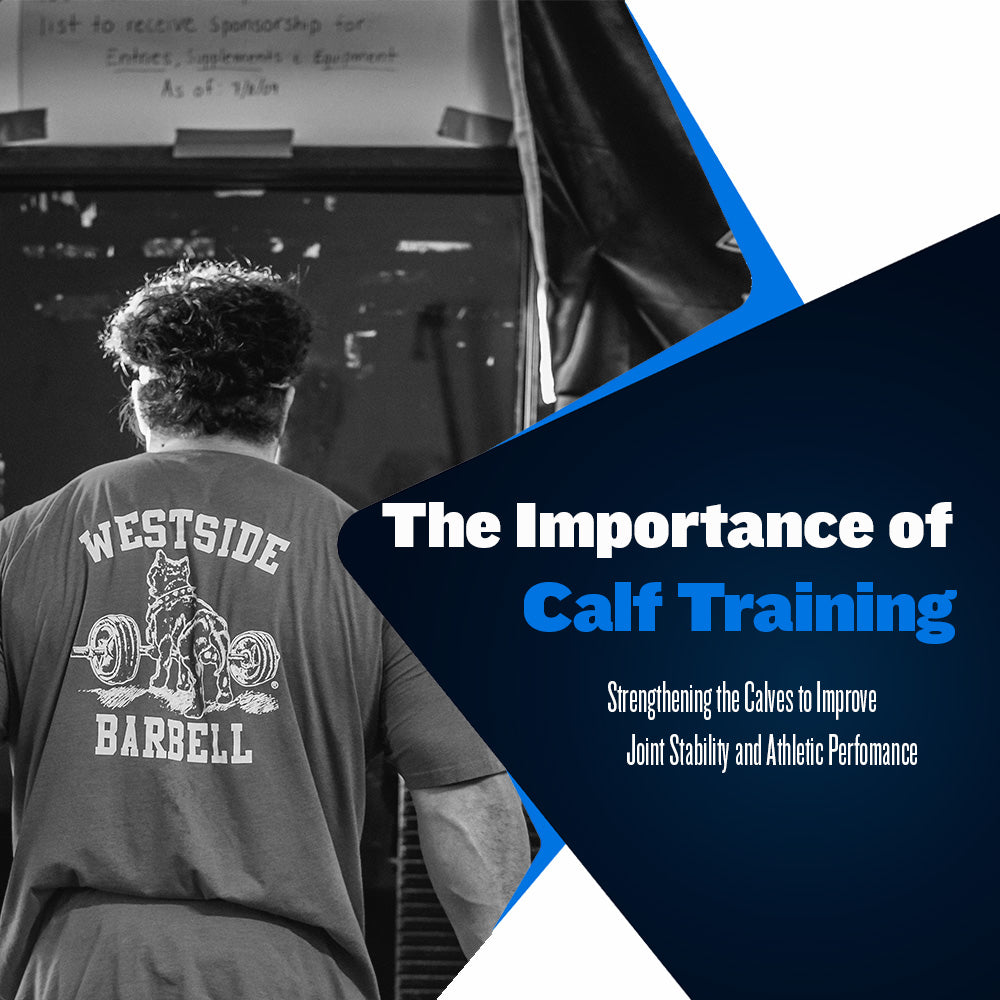The Importance of Calf Training

Building a strong, fast, and resilient athlete calls for a coach to leave no stone unturned. To ensure that an athlete is adequately prepared, you must focus on strengthening all muscle groups to provide adequate joint stabilization throughout the musculoskeletal system. Increased joint stabilization allows an athlete to display higher absolute strength and explosive power levels.
One muscle group that athletes must address is the calves. The calf muscles play a tremendous role in athletics and should be a prioritized muscle group in any training program. As mentioned above, joint stabilization is critical regarding dynamic movement and power output. Without strong calves supporting the ankles and knees, an athlete is at greater risk of injury.
We must understand the basics to understand better how to train the calves. The calves feature two individual muscles; the soleus and the gastrocnemius muscles. The soleus is the muscle that lies underneath the gastrocnemius, while the gastrocnemius is the prominent muscle most think of when they mention calves.
These muscles both play important roles. The gastrocnemius muscle is a two-joint muscle crossing both the ankle and knee, while the soleus is a one-joint muscle crossing the ankle. The soleus plays an essential role at the ankle when the knee is bent, providing ankle support, while the gastrocnemius helps support the knee joint.
The work these two muscles accomplish is important not only for athletic performance but also for injury resistance and overall resiliency. Strong calves lead to better-supported ankles and knees, something all athletes, regardless of sport, can use. Fortunately, athletes can train their calf muscles simultaneously while performing any specific calf-related movements.
Here are a few of the ways we train calves at Westside Barbell to improve lower body absolute and explosive strength:
Standing Calf Raises
This is a no-brainer; if you want to strengthen your calves, you must do some standing calf raises. Athletes can accomplish this exercise differently depending on their gym setup. If you have access to a standing calf machine, that would be the optimal way to perform this exercise.
However, suppose you do not have access to a machine. In that case, you can set up standing calf raises fairly quickly. Use either a squat rack or a smith machine, and place your toes on something that provides adequate ROM to accomplish proper dorsiflexion and plantar flexion.
This exercise is excellent for gastrocnemius development and is typically performed for 4-6 sets of 20-AMRAP, depending on what the training day calls for.
Lying Banded Calf Flexion/Extension
To perform this exercise, you will need a band capable of providing adequate stimulus to accomplish the intended training effect. Depending on your calf strength, this could be a miniband, monster miniband, average band, or strong band. You want to loop the band around the upper part of the foot to allow maximum ROM.
Once the right band is selected and looped around your upper foot, you can begin moving the calf through flexion and extension. Athletes can do this with the knee near lockout or bend the knee to provide different joint angles to manipulate the stimulus.
Athletes should perform this exercise for 3-5 sets of 15-20 methodical reps. You can use this as a way to finish up your lower leg training or as a way to warm up for dynamic effort training. It depends on the band you select and the number of total reps you accomplish. Less for a warm-up, more if you're towards the end of your workout.
Seated Calf Raises
To adequately train the calves, we must train them with the knee bent. With the knee bent, a greater focus is placed on the soleus, making this exercise a great way to target the soleus as the standing calf raises focus on the gastrocnemius.
If the calf raise machine you use has an adjustable seat height, you want to be at a height that allows your knees to be near 90 degrees when seated. Be sure to let your calf muscles go through the full range of motion, with as much flexion and extension as possible.
If you cannot accomplish proper ROM with this exercise, or any calf exercise, it is crucial to focus on mobilizing the ankle joint. If you need advice on ankle joint mobilization, Donnie Thompson has done excellent work putting together effective protocols derived from years of experience and real-world success.
Some Advice
When training the calves, it is vital to do so in a controlled manner. If you move too explosively, you risk allowing the tendons to do more work than the muscles themselves. Ideal calf training should be methodical and targeted, focusing on "feeling" the strain.
As powerlifters, we want our main exercises to be as strong and explosive as possible. As we move onto accessory training, it is important to have the mentality of a bodybuilder, focusing on direct targeting of muscle groups to improve development and eliminate weak links in the chain. If we perform these movements like our main exercises, we risk rendering the work less useful than it would otherwise be.
Your calves act as a foundational muscle group, whether you are squatting, deadlifting, running, or jumping. Without adequately developed calves, you leave your ankles and knees less supported and will be less capable of producing maximal amounts of absolute strength and explosive power.
For more information regarding Conjugate Method programming, please visit the Conjugate Club and consider becoming a member.
Sources:
Simmons, L. (2007). Westside Barbell Book of Methods. Westside Barbell.
Verkhoshansky, Y., & Siff, M. C. (2009). Supertraining. Verkhoshansky.





